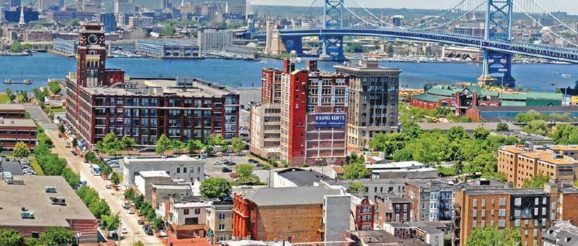Microgrid innovation promises to be part of Camden’s sustainable future – ROI-NJ

The coronavirus pandemic has brought renewed attention to leaders nationwide for how they did or did not prepare their communities for this crisis. While we will undoubtedly learn many lessons from this crisis for decades to come, the need for proactive protection against disasters of all kinds should have already been abundantly clear.
In New Jersey, we learned this same lesson the hard way after Hurricane Irene in 2011, and especially in 2012, when Superstorm Sandy devastated many of our communities statewide. While Camden city was spared the worst of that impact, it enlightened us to the city’s dire need for more resilient energy infrastructure.
Courtesy photo
Camden County Freeholder Jeff Nash.
In 2018, a feasibility study commissioned to look at this issue supported the concept of a “sustainability loop” between the Camden County Municipal Utilities Authority and the Covanta Energy Recovery Center. The “loop” would essentially take a reliable source of clean, renewable energy and establish a microgrid that could separate from the main electrical grid during an outage. In other words, the microgrid could continue supplying power to CCMUA and other critical commercial loads like hospitals, even when the main grid loses power.
To be clear, this has never been done in the state of New Jersey and would represent a first-of-its-kind technological achievement bringing enormous benefits to Camden city and Camden County.
Most importantly, the microgrid would help protect the citizens of Camden from power outages in the case of storms, flooding or other emergencies. The needs for emergency preparation of all kinds has never been clearer. While this pandemic has had a much different impact than a hurricane or superstorm, it has shown that, if you are unprepared when disaster strikes, the ramifications are immediate and severe.
Additionally, the clean, cheaper and resilient power that the microgrid will be able to offer its customers should help businesses with power quality needs, having a direct impact on the local economy and availability of jobs.
This innovative achievement presents another case where leaders from across the state and from across the country are going to be coming to the city of Camden to learn how to improve their infrastructure and how to prepare for the economy of the future. Just as we’ve seen with businesses investing billions of dollars here, and the success of the “eds and meds” corridor, Camden is once again a place where major innovation is taking place.
Last year, we saw devastation wrought by large scale power outages in Puerto Rico when natural disasters struck the island. In New Jersey, we are less than a decade removed from one of the worst storms to ever strike on shores. And now, with a pandemic raging across the nation, leaders of every field are reviewing their emergency preparedness plans to ensure that when the next crisis hits, they’re ready to confront the challenge head on.
By investing in infrastructure improvements, like these microgrids, we will be prepared to mitigate the impacts of major storms and provide our residents access to critical public health and safety services during emergencies.
Jeff Nash is a Camden County freeholder.
